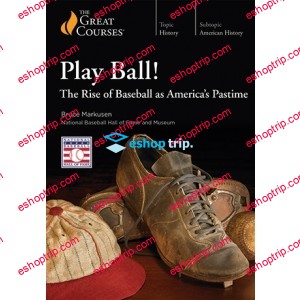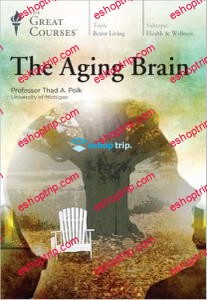10.0 GB
Take a time machine back to the days of pre-industrial America and you’ll see youths, both in the city and in the countryside, playing informal bat-and-ball games. In many ways, these simple activities looked a bit like our modern game of baseball, but they also differed from the now familiar sport in various and significant ways. When you return to the present and head to a local ballpark, you’ll see a very formalized game, one with rigorous rules (both written and unwritten) and also played by adults. And yet the sport captivates our nation’s consciousness and reflects our rich and varied culture, long since having earned the title of “America’s Pastime.”
Every spring, Americans of all ages and backgrounds watch baseball games at their local stadiums or on television. It’s a sport that has become a ritual for millions of fans and participants. Its features—from bunts and home runs to stolen bases and diving catches to popular chants and trading cards—are inextricably linked to American culture. Since the 19th century, baseball has held a celebrated and important place at the heart of the American spirit.
Every time you watch baseball, whether it’s at a youth league field or a major league stadium, you’re watching more than just a game—you’re participating in the latest chapter of a compelling story. What began as the earliest bat-and-ball games became the favorite American pastime of the first 19th-century baseball games. Knowing the history of how baseball came to be what it is today will add levels of enjoyment, respect, and appreciation to any game you watch.
The Great Courses has collaborated with the esteemed National Baseball Hall of Fame and Museum in Cooperstown, New York, to offer a baseball course to fans devoted to baseball and to the public, at large, for those who are curious about the story of American baseball. In 24 lectures that paint a portrait of the sport’s remarkable past, taking you from the decades before the Civil War to the pivotal year of 1920, Play Ball! The Rise of Baseball as America’s Pastime offers a well-rounded, historically rich look at this most distinctive slice of Americana.
Written by famed historian Peter Morris and presented by Bruce Markusen of the National Baseball Hall of Fame and Museum, these lectures guide you through decades of experimentation, change, controversy, and triumph. You’ll encounter early baseball giants, including Albert G. Spalding, Harry Wright, and Harry M. Stevens. You’ll learn the origins of everything from catcher’s masks to batting averages. You’ll consider the true stories of how women, African Americans, and others overcame adversity on and off the diamond. And all of this with the help of remarkable artifacts, images, and footage from the National Baseball Hall of Fame and Museum’s vast holdings.
The story of baseball is one of resourcefulness, entertainment, patriotism, bravery, and grit. It is, in many ways, the story of America itself.
Explore Baseball’s Relationship with National Events
The cultural history of the United States can be explored through many avenues: through its wars, its social movements, its political philosophies, and many others. At first, you might not think that America’s favorite pastime, baseball, would have much to offer in the way of understanding American history, but the truth is that the sport of a nation can shape the culture of a nation—which, in turn, can be shaped by national events.
Striking the perfect balance between sports lore and cultural history, Play Ball! charts the movement of baseball from an amateur sport to a professional enterprise. Mr. Markusen takes you back to a time when children’s bat-and-ball games were first adapted by grown-ups looking for exercise and fresh air. From there, you proceed through several decades of experimentation and change, when: rules were first written (and rewritten), clubs and leagues were first organized, and fan bases grew. Your journey ends in the pivotal year 1920, when a sense of uniformity in the game was finally achieved.
Along the way, you’ll discover how the larger forces at work in America played their own part in shaping how baseball was played. You will look at the relationships between:
- Baseball and Transportation. Why was there no standard version of baseball before the Knickerbockers’ version was widely adopted in the 1850s? Americans didn’t travel enough for there to be a need for such uniformity. After the Civil War, however, the rapid expansion of railroad networks (which helped people escape cities) allowed for more frequent baseball tours and a greater need for standardized rules.
- Baseball and War. Initially, major league ballplayers were given a temporary reprieve from enlisting in World War I. Ultimately, baseball was classified as a “non-essential occupation” and ballplayers who didn’t qualify for an exemption faced the prospect of being sent to the front lines. They put their baseball careers on hold to take jobs in munitions factories and shipbuilding plants.
- Baseball and Business. Part of baseball’s story is its evolution from exercise to business. At the start of the 20th century, Major League Baseball teams began showing an appreciation for brand identification by placing a greater emphasis on logos, team colors, and standard team nicknames. And we can’t forget the concessions business, built on the shoulders of a man named “Hustling” Harry Stevens.
- Baseball and the Press. In baseball’s early years, most reporters devoted little space to the action of the game, and instead focused on pre-game and post-game festivities. Eventually, newspapers began to experiment with more compelling techniques, including using the box score as a way to encapsulate each player’s contribution without having to summarize every at-bat.
Unearth the Roots of America’s Pastime
As you’d expect from a course dedicated to unearthing the roots of the favorite American pastime, Play Ball! is packed with details and insights that just might cause you to rethink what you thought you knew about nearly every aspect of the game.
- Post-season matchups of the champions of the National League and American Association ended in 1891, when the two rival organizations merged into a single 12-team league, initially dubbed the “Big League”—a nickname that soon came to be used as a synonym for the major leagues.
- The terms “infield” and “outfield” are borrowed from farming, the former described in a glossary of agrarian landscaping as “the best land … usually near the farm buildings” that received all the fertilizer and the latter described as “no man’s land,” so any fielder stationed out there had to contend with all sorts of impediments.
- Early umpires were typically local men hired by the home team who knew any call that went against them would bring hoots of derision from the crowd and make future assignments less likely, so visiting teams learned not to expect favorable rulings on any play that was remotely close.
- Ballparks in the 19th century, in light of the limited funds owners were able to spend on them, were regarded as temporary structures built on pieces of land nobody else wanted, and groundskeepers crafted clever ways to create home-field advantages such as sloping the baselines so bunts wouldn’t roll foul.
- The tobacco industry took advantage of baseball’s broad cultural appeal by including baseball cards in packages of cigarettes; and the strategy worked, resulting in increased sales and inspiring other companies (such as CRACKER JACK©) to produce baseball cards, as well.
Get Unprecedented Access to Baseball History
Filmed entirely on location at the National Baseball Hall of Fame and Museum, Play Ball! offers unprecedented access to baseball treasures, including some artifacts not currently on exhibit.
Among the hundreds of objects featured, you’ll encounter historically significant items such as a copy of Dewitt’s Base Ball Umpire’s Guide: A Complete Book of Instructions to Umpires of the Professional and Amateur Arena, published in 1875; illustrations from a rare 19th-century baseball scrapbook; early designs for baseballs; and much, much more.
Mr. Markusen presents this in-depth study of baseball and American history with the knowledge of a consummate historian—and the excitement of the proudest fan.
“This was a dynamic era,” he said of the decades covered in Play Ball! “It was filled with larger-than-life personalities who didn’t always agree on what was best for the game they loved. But on the whole, the spirit that carried the day has breathed life and excitement into our springs, summers, and falls ever since.”











Reviews
There are no reviews yet.